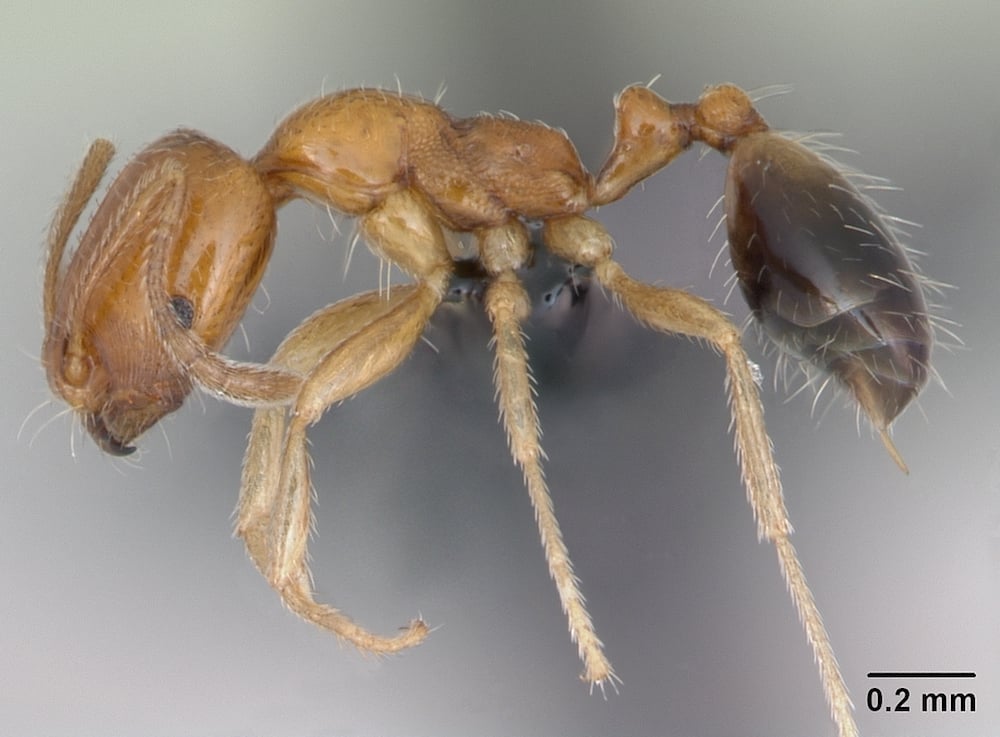Singapore ant (Trichomyrmex destructor)

Pest Snapshot - Singapore Ant
- Scientific name: Trichomyrmex destructor
- Identification: Light brown with darker abdomen. Size: 1.8 – 3.5 mm. Form slow moving, foraging trails.
- Health threat: Low
- Bite / sting pain: Can bite and has an irritating sting
- Difficulty to control: Moderate
- Diet: Omnivore
- Nest locations: Outside in lawns and trees, inside in wall cavities and electrical sockets.
- Colony structure: Multi-nest, multi-queen
- Main pest season: Year round
- Indoor/Outdoor pest: Mainly indoors
image credit: April Nobile / © AntWeb.org / CC BY-SA 3.0
Previously classified as Monomorium destructor
Other common names
Destructive trailing ant. Ninja ant.
Invasive / native:
Invasive
Distribution:
Probably originated in Asia or North Africa. Now found in many tropical parts of the world, including northern Australia.
Typical nest location:
Outside in soil and trees, but will readily nest inside buildings, particularly in electrical sockets and electrical equipment.
Colony size / structure:
Multiple queens and multiple nests as part of the same colony. Colonies can contain millions of ants.
Identification:
Colour: Light brown with darker abdomen
Size: Have polymorphic workers ranging from 1.8 – 3.5 mm long
Nodes on petiole: Two
Food preferences:
Highly varied diet (protein, oils and sugar), but particularly keen on protein and oil foods.
Distinguishing features / behaviours:
- Form long, slow moving trails
- Often nest in plug sockets and electrical items
- Painful bite
Bite / sting:
- Singapore ants have a painful bite
Prevention tips:
Clearing up food spills, regular cleaning of the cooker and grill, and not leaving petfood out will make the area less attractive to Pharaoh ants.
Other comments:
Can sometimes be confused with the Pharaoh ant and big-headed ant
Other types of ants.
How to get rid of Singapore ants – Treatment Notes:
A professional ant treatment is recommended to get rid of Singapore ants, as they are often confused with other ants (such as pharaoh ants) and they require specialist ant products to gain control (which are not available in hardware stores).
Singapore ants readily take a wide range of baits, with corn and protein based granular baits a good starting point. Due to their multi-nest colony structure, several bait applications may be required.
Professional pest managers will often use non-repellent sprays, particularly in treating the exterior of the building to prevent entry. As they tend to nest around electrical areas, the use of dusts should also be considered if the nests can be located.
